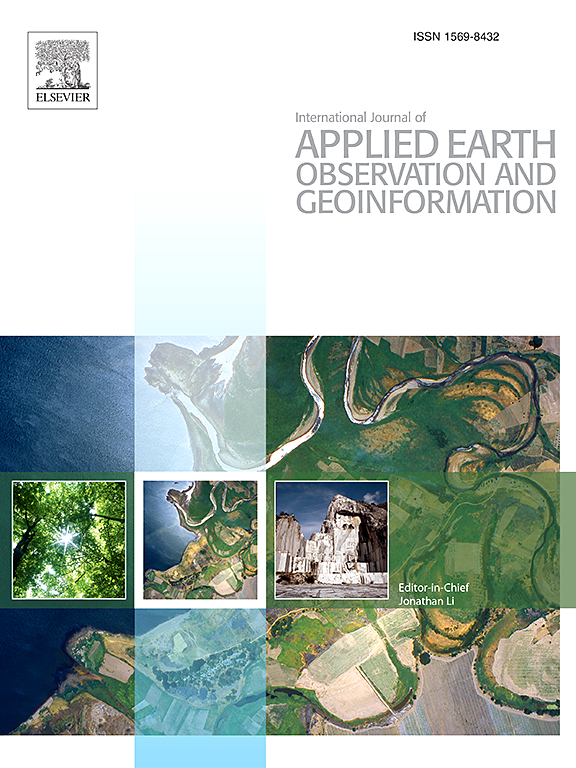Extracting a decadal deformation on Xiaolangdi upstream dam slope using seasonally inundated distributed scatterers InSAR (SIDS − InSAR)
IF 7.6
Q1 REMOTE SENSING
International journal of applied earth observation and geoinformation : ITC journal
Pub Date : 2025-03-10
DOI:10.1016/j.jag.2025.104462
引用次数: 0
Abstract
Estimating deformation at the upstream dam slope from Interferometric Synthetic Aperture Radar (InSAR) is challenging due to the complete loss of coherence in seasonally inundated upstream slope. Here, we present an improved Distributed Scatterer-InSAR method that accounts for the seasonal decorrelation of upstream dam slopes and optimizes the interferogram pair selection with inter- and multi-annual baselines. We term this novel method Seasonally Inundated Distributed Scatterer InSAR (SIDS-InSAR). We apply the method with multi-sensor InSAR observations during 2007–2023 at the Xiaolangdi Reservoir (XLD), China, including Sentinel-1, ALOS-1, and ALOS-2. The results show that a new deformation map on a 1540 50 m2 upstream slope in XLD, and a decaying settlement of 4.7 cm/yr (2007–2010) and 2.5 cm/yr (2015–2023), with an RMSE of 0.62 cm/yr compared to the leveling measurement. Additionally, the deformation rates are heterogeneous across the dam body as 3.7, 4.2, and 3.2 cm/yr for upstream, crest, and downstream, respectively. This study demonstrates that the SIDS-InSAR method has potential to provide a more comprehensive deformation time series of dam body, especially for the leading-edge upstream slope part.
求助全文
约1分钟内获得全文
求助全文
来源期刊

International journal of applied earth observation and geoinformation : ITC journal
Global and Planetary Change, Management, Monitoring, Policy and Law, Earth-Surface Processes, Computers in Earth Sciences
CiteScore
12.00
自引率
0.00%
发文量
0
审稿时长
77 days
期刊介绍:
The International Journal of Applied Earth Observation and Geoinformation publishes original papers that utilize earth observation data for natural resource and environmental inventory and management. These data primarily originate from remote sensing platforms, including satellites and aircraft, supplemented by surface and subsurface measurements. Addressing natural resources such as forests, agricultural land, soils, and water, as well as environmental concerns like biodiversity, land degradation, and hazards, the journal explores conceptual and data-driven approaches. It covers geoinformation themes like capturing, databasing, visualization, interpretation, data quality, and spatial uncertainty.
 求助内容:
求助内容: 应助结果提醒方式:
应助结果提醒方式:


